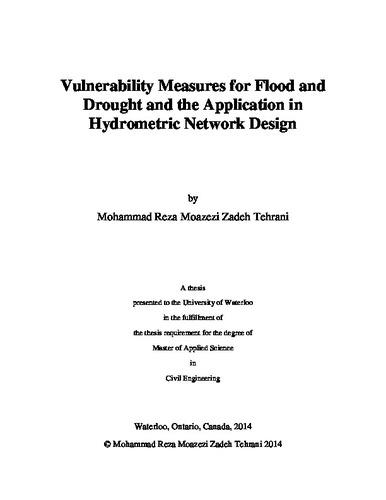| dc.description.abstract | Climatic variability and change can have profound impacts on human societies and wildlife habitats. Extreme events and natural hazards such as floods, droughts, and windstorms, can lead to loss of lives, economic damages, and disruption in livelihoods, infrastructure, and ecosystems. These impacts depend on the intensity and the magnitude of the hazard and the characteristics of the society hit by the disaster. Investigating and predicting adverse effects of frequent climatic hazards are essential for policy makers and resource managers to plan for the future and be prepared for the consequences of these types of natural disasters. Vulnerability assessments provide a framework to detect the potential threats by exploring the nature of the hazard as well as the political, economic, and social conditions that are expected to affect the capacity of communities to cope with or adapt to that hazard.
This research involves the development of a framework for vulnerability assessment of flood and drought at the river basin, sub-catchment, and community scale. The vulnerability assessment method is composed of three major components of exposure, sensitivity, and adaptive capacity. Several indicators are identified to represent these major components of the vulnerability structure. The developed vulnerability assessment has then been implemented on the Upper Ottawa River Basin, Canada. A Geographic Information System-based methodology is used to manage a wide variety of data, to aggregate and integrate several indicators including socio-economic and biophysical indicators, and to visualize the final vulnerability map. The studied areas are categorized in three levels of the vulnerability, high, moderate, and low. North Bay is identified as highly vulnerable to both flood and drought risk. Noranda is also classified as a highly flood-vulnerable area.
The vulnerability assessment will provide a valuable insight for mitigation planning as well as prioritizing resource allocation for decision makers. In this research, the location and adequacy of the hydrometric monitoring stations in the Upper Ottawa River Basin are evaluated using the vulnerability map for optimum design of monitoring network. | en |

